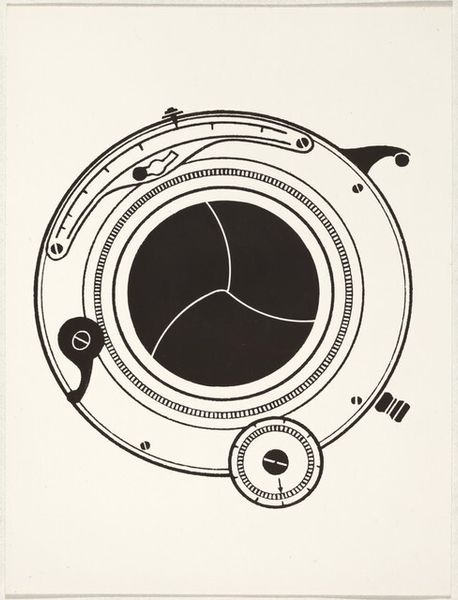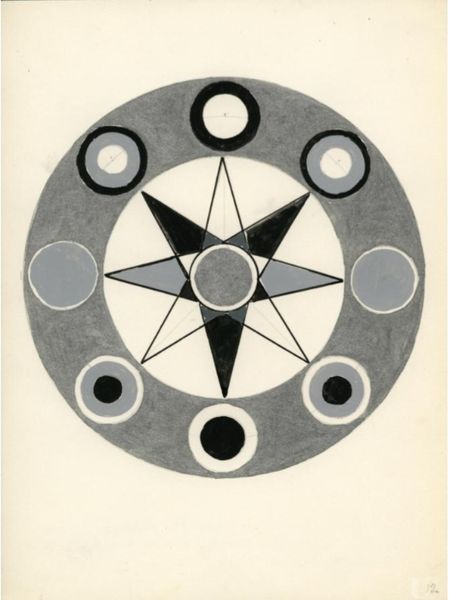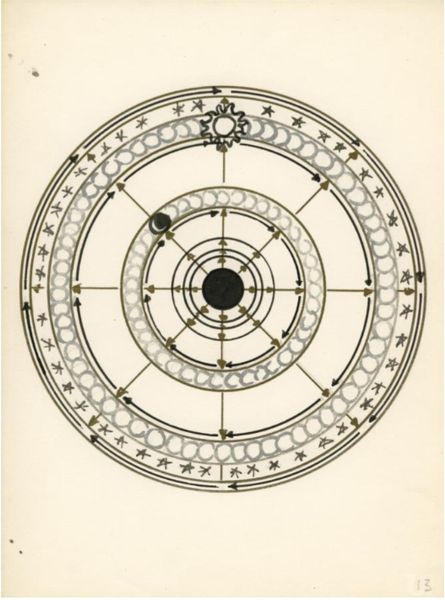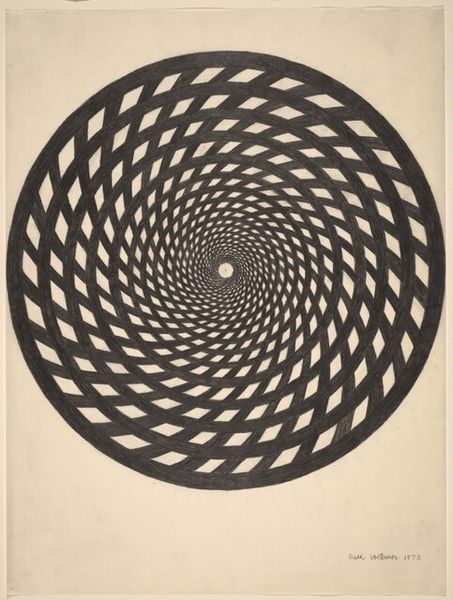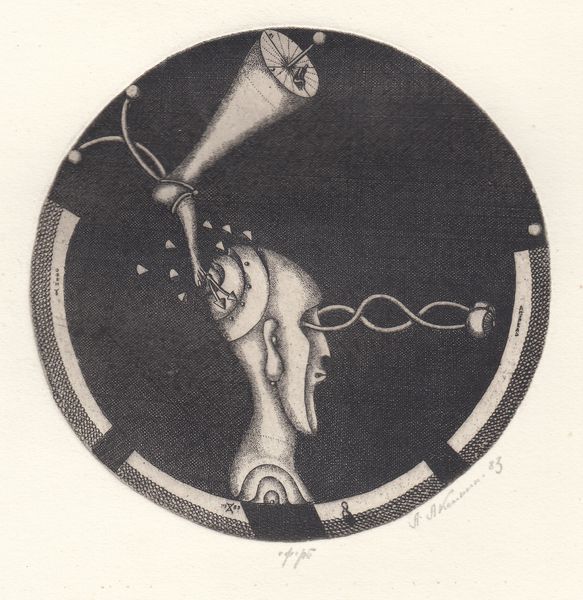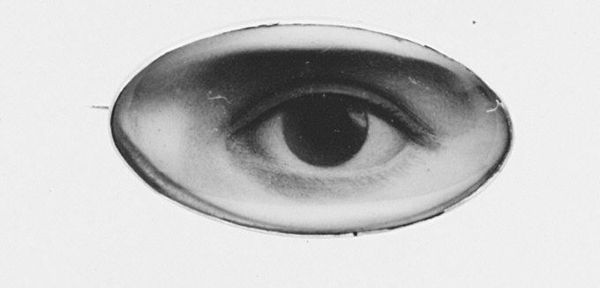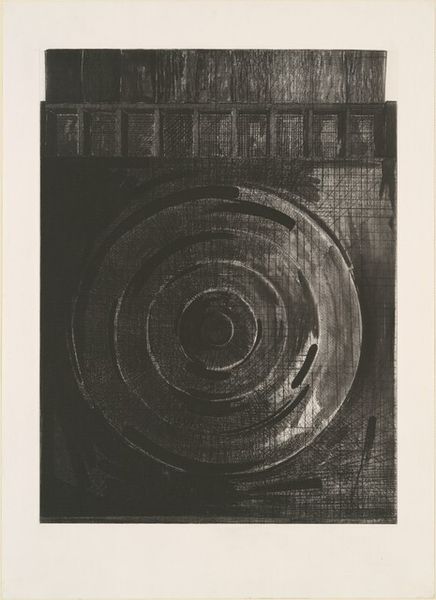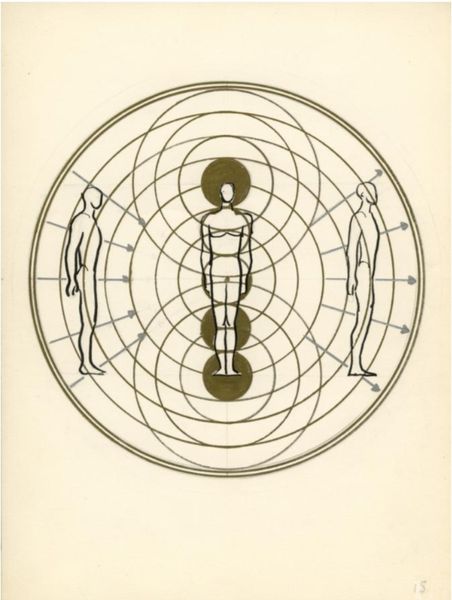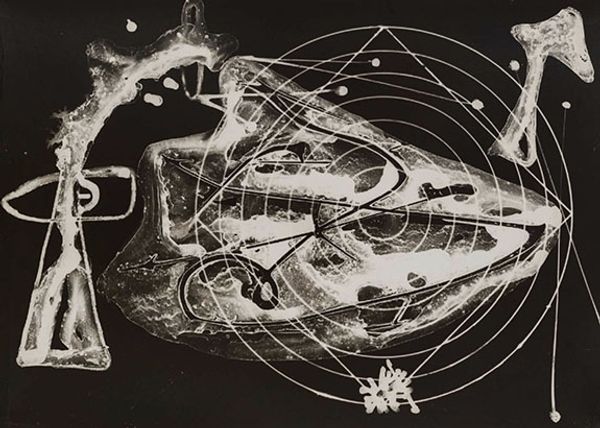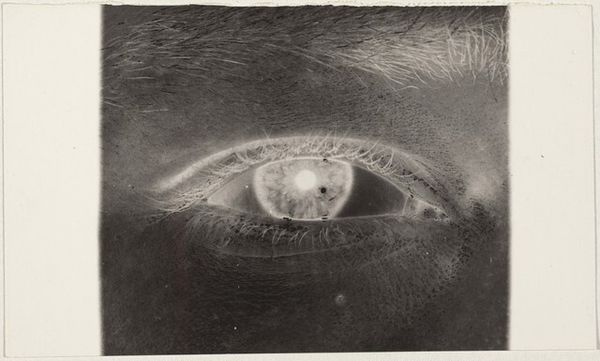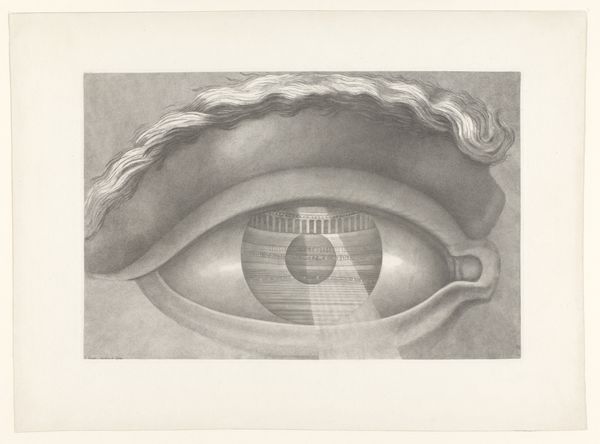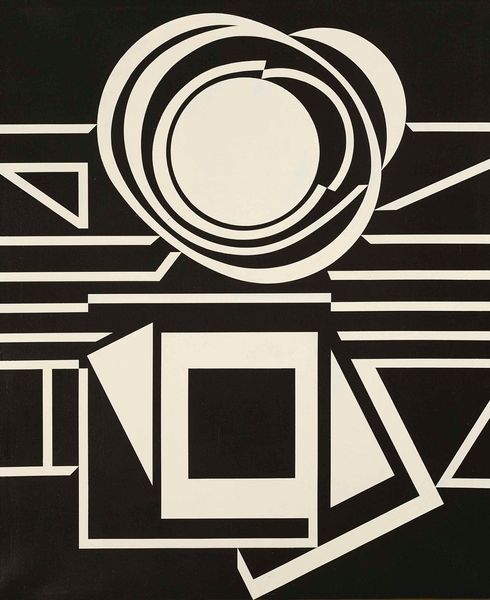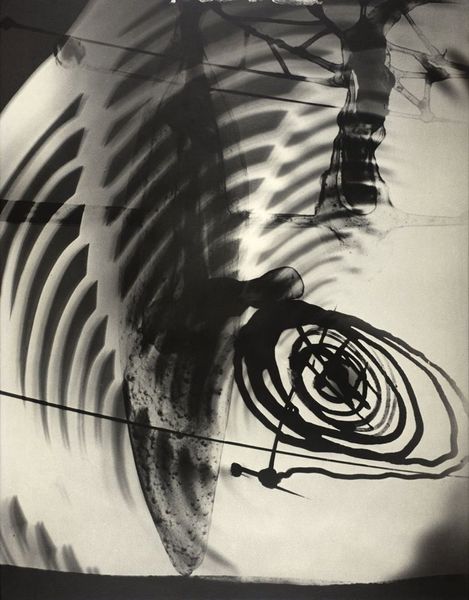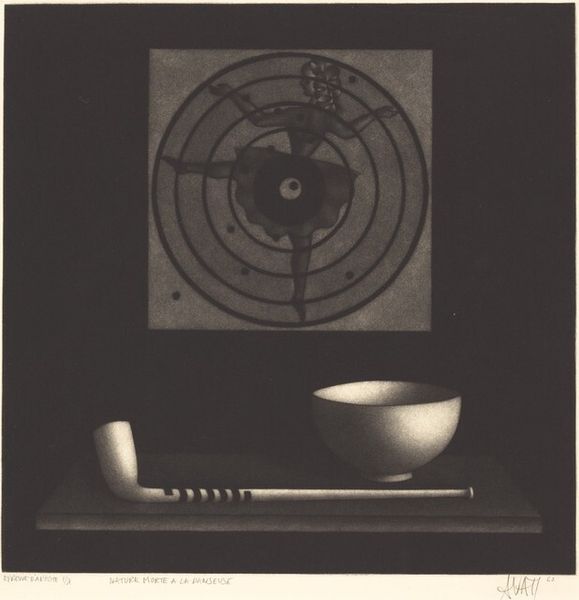
photography, gelatin-silver-print
#
portrait
#
photography
#
gelatin-silver-print
#
modernism
Dimensions: image: 23.6 x 18.2 cm (9 5/16 x 7 3/16 in.) sheet: 24 x 18.2 cm (9 7/16 x 7 3/16 in.)
Copyright: National Gallery of Art: CC0 1.0
Curator: Robert Frank created this gelatin silver print, titled "Eye in shutter--40 Fotos," around 1946. Editor: The first thing that hits me is the stark contrast—the deep black background really makes the eye and the camera's shutter mechanism pop. It's surprisingly graphic for a gelatin print. Curator: Well, Frank's work, particularly during the post-war period, often reflected the anxieties of observation and surveillance that permeated society. The image certainly positions the viewer as both observer and observed, doesn't it? We're drawn to the eye, but it stares right back. Editor: Precisely! And it's clever how he merges the organic—the eye itself—with the mechanical. I mean, the eye isn't just *in* a shutter; it *becomes* part of it. The process of image-making is right there, on the surface. You can practically feel the pressure of the shutter closing. What kind of labor went into producing these gelatin prints on the art market? Curator: Gelatin silver printing was already well-established by then, but Frank would have been using an enlarger to create these compositions from his negatives. The fact it exists as part of a wider series titled '--40 Fotos', raises all sorts of possibilities for narrative and interpretation when viewed together in sequence. This also implies the gelatin-silver process was a mode of production which required the hand. Editor: I agree. Seeing the mechanical parts rendered so cleanly like this speaks to a certain precision and mastery, drawing a link with photography's inherent indexicality, whilst making it a statement on artifice through form. The graphic nature evokes modernist ideals. Curator: The use of photography for portraiture underwent a democratizing shift from its elitist appeal in earlier centuries as technical procedures became common in public. Robert Frank’s photograph adds a complex dimension of technology by placing an intimate eye inside an image-making apparatus. It marks photography as not just being available to all but becoming a part of self-fashioning in the public sphere. Editor: Thinking about Frank’s technical experimentation makes me look at it as not only documenting a certain experience but exploring the means to record itself and how technology might serve an intimate self. Curator: Absolutely, there’s a great degree of self-awareness reflected in the lens through Frank's use of photography. Editor: Definitely offers an angle to how one can approach this portrait beyond surface level aesthetics.
Comments
No comments
Be the first to comment and join the conversation on the ultimate creative platform.
